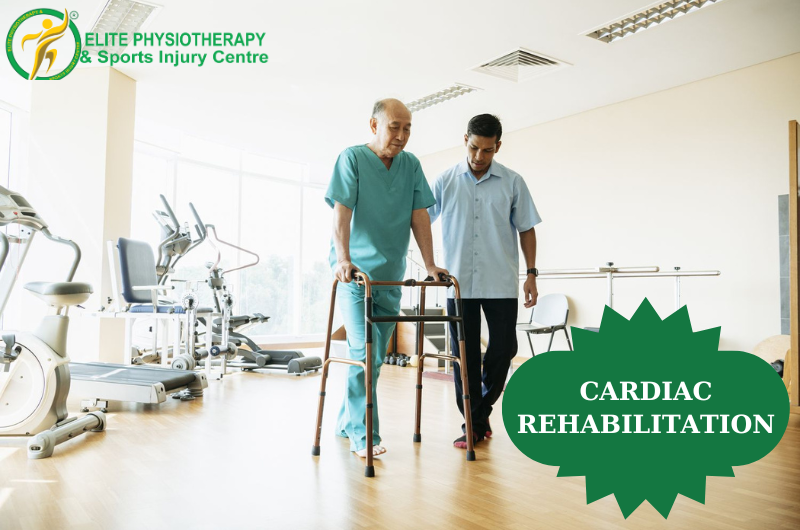
Cardiac Rehabilitation
Cardiac Rehabilitation is a comprehensive program tailored for individuals recovering from heart-related surgeries, disorders, or those at risk for cardiovascular diseases. It embodies a multidisciplinary approach, blending supervised exercise, lifestyle education, and emotional support to rebuild strength, prevent condition worsening, and enhance quality of life. By emphasizing heart-healthy living through diet modification, stress management, and physical activity, it aims to fortify the heart’s health and aid patients in regaining confidence in their daily activities. Cardiac Rehabilitation is a journey of empowerment, guiding individuals towards a sustainable, heart-conscious lifestyle, and providing them with the tools to navigate their health with knowledge and resilience.
Questions
WHAT IS CARDIAC REHABILITATION?
Patients who have had heart surgery receive cardiac rehabilitation. Cardiac rehabilitation builds a workout regimen that is progressed in order to improve overall functioning and cardiovascular fitness.
WHAT ARE THE VARIOUS TYPES OF CARDIAC SURGERIES?
The various types of Cardiac Surgeries are:
Angioplasty:
To enlarge the constricted arterial, a thin, flexible tube with a balloon at the tip is inflated at the narrowed portion of the artery. The artery is then maintained broad by a stent left in place.Coronary artery bypass graft (CABG):
A blood vascular transplant from the arm, leg, or chest is used during a coronary artery bypass graft (CABG) procedure to bypass a blocked or constricted coronary artery.Valve Replacement:
When a valve has to be replaced, the damaged valve is swapped out for a synthetic valve composed of carbon fiber or human tissue.Pacemaker:
An electrical implant that aids in heartbeat regulation is called a pacemaker.WHAT ARE THE BENEFITS OF CARDIAC REHABILITATION?
A patient undergoing cardiac rehabilitation improves their general health:
increases the heart's cardiovascular endurance, which helps the body get adequate oxygen when exercising.
enhances physical activity and aids in increasing calorie burn by using all body muscles.
enhances everyday activities by incorporating physical activity into regular routines.
increases physical fitness by providing the energy needed to do everyday duties. The purpose of these planned, created, and performed fitness workouts is to increase physical fitness.
enhances the muscle's capacity to stretch and cross joints, as well as its range of motion.
increases the ability of the muscles to produce force with a single, peak effort.
increases the ability of muscles to contract repeatedly against a given resistance.
stops cardiac arrest from happening again.WHAT ARE THE VARIOUS TYPES OF CARDIAC REHABILITATION EXERCISES?
Aerobic or cardiovascular exercise,
Stretching and
Strengthening exercises.
Aerobic exercisesLarge muscular groups are worked out with these frequent, continuous workouts. For at least ten minutes, it raises heart rate and burns calories. The heart health benefits greatly from these activities.
HOW DOES CARDIAC REHABILITATION WORK?
Cardiac rehabilitation exercises consist of 3 parts:
Warm-up or stretching exercises
Cardio exercises
Strengthening exercises
Cool-down exercisesPrior to beginning the primary activity, the patient's heart rate and blood pressure are measured. They then have a 15-minute warm-up. Finally, ten minutes of cool-down activities are completed, and the blood pressure and heart rate are once more taken.
WHAT ARE THE PARAMETERS?
F.I.T.T. stands for Frequency, intensity, time, type is often used to provide guidelines for different types of exercises:
F represents The term "frequency" refers to the frequency of the workouts. Five to seven days a week should be dedicated to aerobic activity. I support The term "intensity" refers to the level of difficulty of the workouts. The patient should perform the exercises at a moderate intensity, which is the point at which they may converse with others without experiencing significant difficulty. T, which stands for time, indicates the recommended duration of the workouts. It is necessary to complete the activities. Without pause.
Exercise should be done for 30 to 60 minutes per session if long-term goals are to be met. Even though there are several advantages to consistent exercise, 10-minute workouts can be added to throughout the day to get 200–400 minutes of aerobic activity per week. T, for Type, indicates what sort of task ought to be carried out. Cycling, brisk walking, skating, swimming, cross-country skiing, and using equipment like a stationary cycle or treadmill are a few examples of aerobic exercise.
Aerobic Interval Training, or AIT for short, is a type of cardiovascular exercise that alternates between hard workouts and less strenuous recovery intervals. It aids in the safe training of individuals with different cardiovascular diseases.
Monitoring the exercise level:
The patient's body should not be over exercised during exercise; this may be verified by,Measuring the heart rate (pulse):
The number of heartbeats per minute, or heart rate, is a measure of the patient's level of exertion. The heart rate rises during activity in order to pump blood and oxygen.Effort score:
Another technique to gauge how difficult the workout is is to keep an eye on your effort score, which is represented by a score chart with a range of 1 to 10.activity that is moderately to relatively intense is advised during the recuperation period; if the activity is too intense, it has to be slowed down. Exercise intensity should be monitored and maintained within safe bounds.
WHO CAN BENEFIT FROM CARDIAC REHABILITATION?
Patients with mild to severe heart issues of all ages, male and female, benefit from cardiac rehabilitation. It is beneficial for patients with the following conditions:
Coronary artery disease,
Coronary artery bypass surgery,
Heart attack,
Heart failure,
Angioplasty and stents,
Heart valve repair or replacement,
Angina (chest pain),
Peripheral artery disease,
Cardiomyopathy,
Heart or lung transplant,
Pulmonary hypertension etc.
